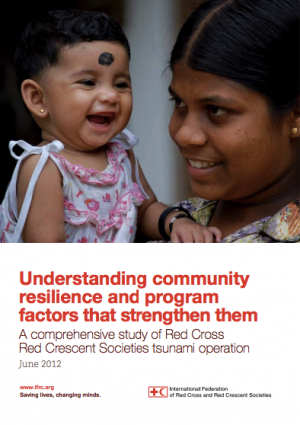Purpose
This document outlines characteristics of safe and resilient communities, including presenting case studies of communities which received Red Cross / Red Crescent support through its Tsunami operation, as well as factors and lessons in successful community-based disaster risk reduction (CBDRR) programming.
Overview
A safe and resilient community:
- Is knowledgeable and healthy: it can assess, manage, and monitor its risks, learn new skills, and build on past experiences.
- Is organised: it can identify problems, establish priorities, and act.
- Is connected: it has relationships with external actors (family friends, faith groups, government) who provide a wider supportive environment, and supply goods and services when needed.
- Has infrastructure and services: it has strong housing, transport, power, water, and sanitation systems. It has the ability to maintain, repair, and renovate them.
- Has economic opportunities: it has a diverse range of employment opportunities, income and financial services. It is flexible, resourceful and has the capacity to accept uncertainty and respond (proactively) to change.
- Can manage its natural assets: it recognises their value and has the ability to protect, enhance and maintain them.
Key determinants of a successful CBDRR programme include: enabling environment; programme design; and programme management.
Usage: Guidance for project implementation
Audiences: Technical staff
![]()


